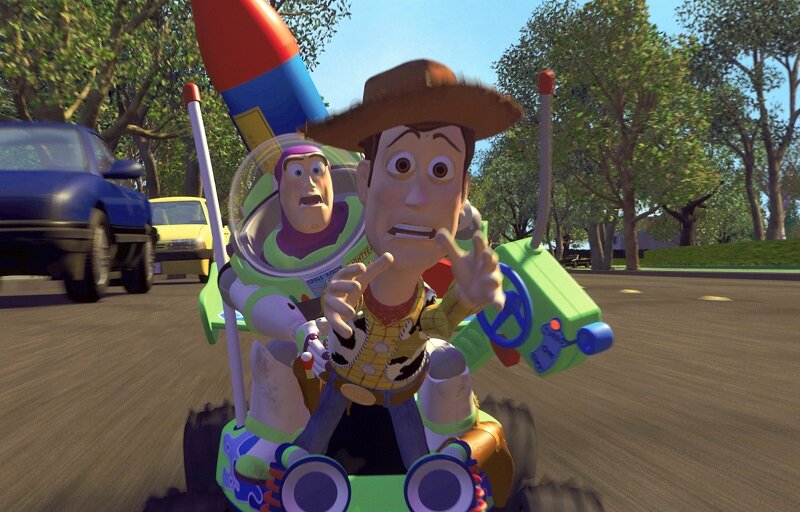Toy Story, The Pixar Film That Started It All
Toy Story. Image courtesy of Pixar.
When Pixar released Toy Story in 1995, it was truly a watershed moment in cinema. The 3-D animation was legitimately groundbreaking, and coming just two years after Jurassic Park it was a clear signal about the inevitable role that computer generated imagery was destined to play in film. It also, we now know, marked the beginning of several decades of more or less unbroken commercial and financial success for Pixar. For me personally, Toy Story was a formative movie-going experience. I became obsessed with the film as a kid and made my mom buy the VHS which I would watch over and over.
Of course, the story of Pixar itself is fascinating stuff. Originally an off-shoot of Lucasfilm, it got an injection of seed funding from Steve Jobs to basically muck around with computer animation for a couple years in the late 80s and early 90s. The use of this technology as a mainstay of blockbuster filmmaking was hardly a given back then, and indeed Pixar for many years created these little animated digital curios while consistently losing money until Toy Story showed, rather conclusively, the earning potential of marrying 3-D digital animation and cinema.
Toy Story grossed over $370 million in 1995, and is widely regarded as one of the best animated films of all time. A huge part of Toy Story’s success is of course the technological breakthroughs, taking the proof of concept they had been tinkering with in these little interstitials and short films over the years and scaling it up to be a massive commercial success. That Jobs stuck with it after getting the boot from Apple and had his risky investment pay off big time also provides the kind of dramatic little Silicon Valley redemptive arc that fanboys of American capitalism love.
But it wasn’t just the technology factor, or the compelling behind the scenes business backstory. The thing that sets Toy Story apart, and gives it such staying power even decades later, is in the sheer quality of the storytelling. Technology and management and even good animation can only get you so far. At the end of the day, to truly make a mark in the cultural consciousness, you have to come up with a good story, memorable characters and tell their story well. And that is what Toy Story did with maximum skill, efficiency and flare.
Part of this is because the medium of animation is time-consuming and costly. You cannot improvise scenes on the fly and do re-shoots or let the film move freely within the confines of a vague outline, as you can some times do in a regular film. The story has to be very carefully plotted way in advance, and so it has to be rock solid and durable and good. With animation it’s very hard to get away with bad, sloppy or lazy writing because once it goes into the production pipeline it cannot be changed.
This was, incidentally, one of the keys to the success of The Simpsons - they assembled a world class team of writers and made sure the scripts were absolutely as good as they could be before they went out to be animated. Not surprisingly, several Simpsons veterans would eventually come over and work for Pixar and help write and direct some of the studios best films.
You had people like Joss Whedon, Andrew Stanton and Pete Docter working on Toy Story, working off of a really terrific idea from John Lasseter - that fantasy we all had as kids, that our toys were real and maybe lived in their own little world. This idea was perfectly suited for the medium, with the technological advances in 3-D digital animation opening up all sorts of new creative ground to visually explore the world of sentient toys in a way that had never really been done before.
And ultimately, that is what gives Toy Story the staying power and made it into such a classic. It blended cutting edge technology with a flawlessly constructed narrative, where memorable characters hit all the right emotional beats. It has great dialogue, great visual gags, tremendous voice acting, and even deep thematic resonance which makes people think about friendship and maturity and the way things and people change over time. In later installments, the Toy Story franchise has become a bit obsessed with the passage of time but I don’t think that was ever the secret of its success.
The secret was in taking a great story and telling it well with tools that no one had ever seen before. Pixar would go on to do this many many times over in subsequent years, reaching a level of consistent quality output possibly unrivaled by any other major studio. But it all started here, with Toy Story, a humble and at the time unproven $30 million affair that made its budget back 10 times over and showed that with computer animation, when placed in service of a great story and beautifully written characters, the sky was the limit.






